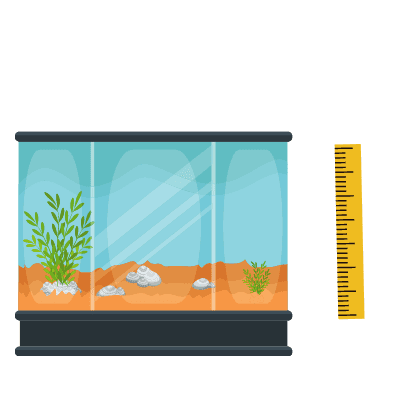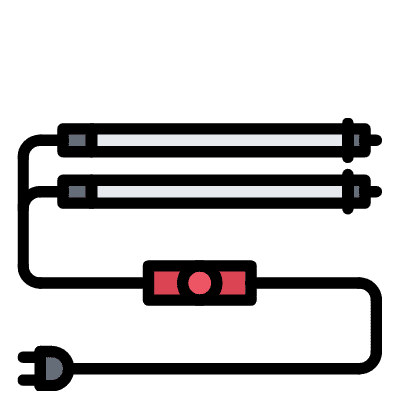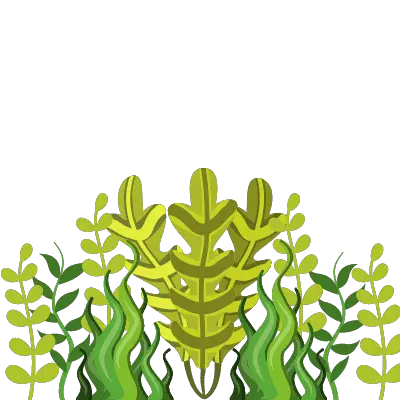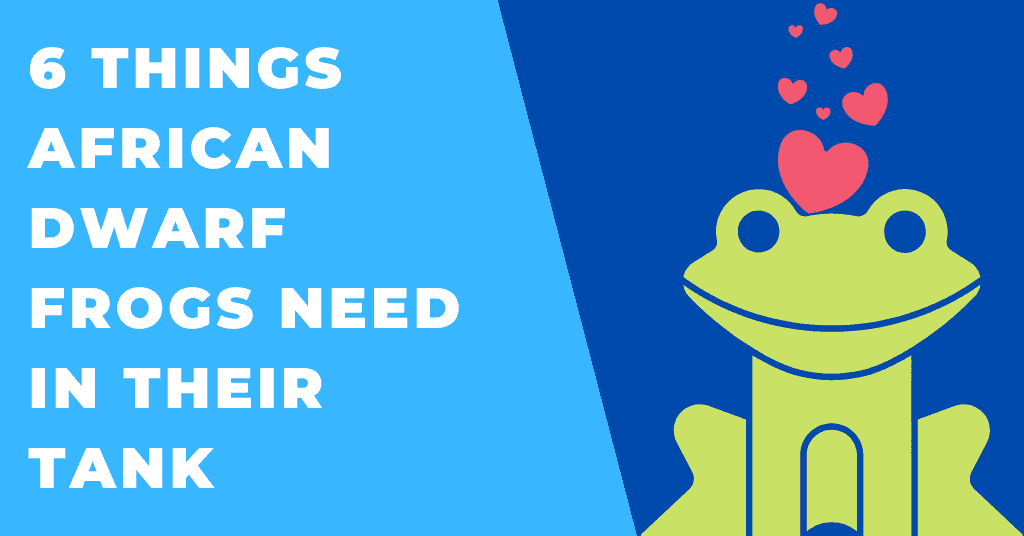Last Updated on August 20, 2022 by cmoarz
African Dwarf Frogs are tiny and adorable little creatures. They make an amazing pet for anyone in the family. But before you go ahead and buy one, it is important that you know what the frog needs before you start buying stuff for it. The following are 7 things African Dwarf Frogs need in their tank:
Some quick facts about African Dwarf Frogs:
Level of Experience: Intermediate
They can reach a length of about 3 inches (8 cm).
They have a lifespan of 10 to 15 years.
Recommended tank size 5 gallons, 10 gallons, 20 gallons.
Not to be confused with African clawed frogs.
With all that said, What do African dwarf frogs need in their tank?
Table of Contents

1. Tank size, Choosing the right size tank for your African dwarf frog
The first step is choosing the correct-sized African dwarf frog tank. In order to give the best African dwarf frog care, step one is choosing an appropriate gallon tank.
Generally, 2 African dwarf frogs can happily live in a 5-gallon. So that’s about 3 gallons per frog. The more frogs you intend to add, the bigger you’ll need to go.
I always recommend a 20-gallon for new African dwarf frog owners. This allows them much more space to swim and play, and also gives you more options to increase the number of African Dwarf Frogs you have in the future. It gives more than enough water per frog!
It also gives you more space to add more decorations and plants and you can really play with your aqua scaping skills and show off your creation.
With a larger tank, you also have the option of adding different types of tank mates with your frog. You will do less maintenance such as water changes while still maintaining the high water quality your pet frogs need.
It simply allows for more to happen in the tank!
You can always upgrade your African Dwarf Frogs to a bigger tank later on when required, though. So if you only want a 5 gallon for 2 frogs, that’s perfectly fine.

2. Adding heat to your African dwarf frog enclosure
The second step is to consider the heating of your African Dwarf Frog’s tank.
Because African dwarf frogs are fully aquatic creatures and can’t come out of the water to bask under a heating lamp, You will need to keep the water temperature at their desired level of 68 to 78 degrees Fahrenheit (20-26 Celsius).
There are a lot of options when it comes to heating one of these frog tanks, but the one we recommend the most is either an under-the-tank heating pad (specifically designed for amphibians) Or an under-substrate heater.
If you don’t want to bother with those types of heaters, A submersible water heater can be used to keep the water at a comfortable temperature for your African Dwarf Frogs and will work just fine.
A rule of thumb you should follow is a heater should use 5 watts of electricity per 1 gallon of water. With smaller tanks, you can get away with less. But also keep in mind if you’re in a cold climate, You might need to increase it.
Sometimes, When you have a lot of tanks, it’s easier to heat the room rather than the individual tanks. This saves on electricity costs as well. It’s also easier to maintain a constant room temperature threw out the year rather than individual tank temperatures.
You want to make sure you’re measuring the water temperature. It is incredibly important that you have an aquarium thermometer in there somewhere.
This way, if anything goes wrong, you will know right away and be able to fix it before any serious injury occurs.

3. Lighting is important to African dwarf frog care
To remain healthy and to keep their natural cycles in tip-top shape, You should allow your frogs to have 8 to 12 hours of light every day, no more no less.
One big tip here is to invest in a timer. An automated light timer will make your life so much easier.
When you’re busy it’s difficult to remember to turn the light off and on, especially with African Dwarf Frogs because they do rely so heavily on atmospheric changes for some of their sleep patterns.
We really recommend a timer for this as it will eliminate all those worries from your daily life.
If you don’t want that hassle of getting a timer, But enjoy the hassle of remembering to turn the light off manually every night, That’s always an option but I do not recommend it!
This is especially true with the more tanks you have!
Just about any aquarium light is good, Even the ones that come built into the hood of the aquarium.
Be advised though, You will have a lot of plants in this tank (we get into that lower in this article) so you should have a light powerful enough with the right wavelengths to induce and maintain good plant life growth and health.
Blue nightlights aren’t necessary to your frog’s health, But they don’t hurt either. If you feel like you want to install a blue night light, that by all means, it’s perfectly fine to do so.

4. Filtration and Maintenance of your African Dwarf Frog aquarium
Filtration is an important part of any tank. When it comes to African Dwarf Frogs, You want to be sure that the filter you are considering has a low flow rate. Most filters are variable in the amount of gallonage per minute they spit out.
My personal recommendation is sponge filter and airstone filters, but there are other options as well.
Either internal filters or canister filters. This should be done because these types of filters will have less maintenance and will work well with smaller tanks, The less surface area there is, The less maintenance it requires.
Whatever you choose, the filter should be quiet. These frogs have very delicate hearing and the constant humming can be very annoying and stressful for them. The ideal filter will always be one outside of the tank that quietly cycles water in and out, But they are usually quite expensive.
Tank maintenance is pretty straightforward. Test your water and make sure the parameters are up to snuff.
Those are
- Temperature: 68°-82°F (20°-28°C)
- Ammonia/Nitrite: 0
- Nitrate: <20 ppm
- pH: 6.5-7.5
- GH: 5-20
- KH: 4-15
If your water parameters aren’t within these ranges then it’s time to do maintenance. I can’t give you an exact schedule as it’s going to be different based on a variety of factors such as tank size, local water quality, etc. Here’s a basic process for you to follow through.
In a 5 gallon, at least 1 20% water change a week, but preferably 2. Vacuum any crud on the bottom of the tank at least once a week. Usually, do this before a water change as by the time your finish you’ve probably already removed 10-20% of the tank’s water.
if you overfeed, You will need to adjust your schedule to match the excess mess. Pretty much at the end of the day, you will eventually figure out the schedule your tank needs, as these are only guidelines.

5. Aquarium plants and having a well-planted tank
Plants are vital to African dwarf frog care. There are several things plants achieve that are important to your frog’s ecosystem. They also create a natural and more aesthetically pleasing environment for your frogs.
Live plants also provide better water quality as they break down toxins such as nitrates and ammonia, And help control the pH levels in the tank. All that uneaten food you feed your frogs ends up getting used up as fertilizer and keeps your tank water nice and clean.
Live plants also offer several bonuses for your frog. For once, It helps them get to the surface of the water to breathe by allowing them to cling and climb up longer stem plants, or hang off floating plants at the surface. This is much easier for them than having to swim to the surface to breathe.
Live plants also offer plenty of hiding places for your frogs, as well as plenty of hiding spaces for the rest of your community fish, if you happen to have any community fish in your tank with your ADF’s.
I won’t lie to you, African dwarf frog care is much easier with plants. Plants provide a means to an end. If you want to simplify things even more it will be well worth the money to purchase some aquarium plants when you start up your tank.
A small enough forest of stem plants, a large enough patch of aquarium grass, and some floating live plants will do your pet frogs and community freshwater fish a good life. These hiding spaces will make them very happy!
And luckily, they’re easy to acquire too! Just hit up your local pet store and they are sure to have plenty of live plants in stock for freshwater fish and frogs.
Caring for your aquarium plants is pretty easy too. Just burry a bit of fertilizer tabs near the roots and that should last for several months at a time. Make sure each plant has adequate lightning, which means not strangulating the shorter ones with taller or floating plants.
6. Feeding and food schedule
African Dwarf Frogs are finicky feeders, making it difficult to give them food. In addition, they are sluggish eaters who can’t compete with fish when it comes to snacking.
One issue that aquarium keepers confront is the need for an aquatic diet solution that may endure in water for a longer period of time without crumbling.
Because the dwarf frogs are sluggish feeders, they may choose to return to a meal source at a later time to acquire another bite.
Frozen bloodworms or live black worms are the finest food choices for African Dwarf Frogs. Frozen bloodworms are a more popular dietary option, but they’re also an excellent choice when it comes to feeding your aquatic creatures.
Frozen bloodworms will not dissolve within a short time period, allowing your frogs to eat at their leisure.
Freeze-dried bloodworms are a choice, but frozen bloodworms sink to the bottom as they thaw since dried bloodworms float on top.
Live black worms may be a better alternative if you don’t want to give your frogs food every day.
If you do decide to use freeze-dried bloodworms, soak them for at least 30 minutes beforehand, and squeeze them to get the air out. This also helps the frogs avoid digestion issues.
Blackworms are an uncommon food alternative for African Dwarf Frogs, but they have several benefits. Your local fish store should be able to provide you with black worms.
Because they are still living, active, and will bury themselves in the gravel in your tank, these worms have the ability to live indefinitely within your aquarium and provide a continuous source of food for your flourishing frog’s midnight snack.
The blackworm is an excellent food for your frogs since it is a protein-rich food that they can eat with a quick jerking motion.
The manner in which the blackworms move will inspire your frogs to consume them, and if you have any docile fish in the tank, they’ll go nuts over them. Blackworms are also great.
Blood worms and black worms are both excellent food. It’s best to provide your frogs with high-quality food since it will make them happier and the tank cleaner.
Food pellets are also not suggested as a food source for your frogs. Food pellets dissolve quickly in water, which is why African Dwarf Frogs are sluggish feeders.
Before a pellet dissolves to the point where it’s no longer eatable, your frogs will have less time to enjoy their meal.
disintegrating pellets also results in a higher amount of waste for your tank. If you do decide to feed your African Dwarf Frogs pellets, however, keep them in a petri dish inside the aquarium. This way, if the pellets disintegrate, they will be less likely to spread throughout the tank or get caught in the gravel.
Some other quick food ideas are:
- Brine shrimp
- Baby brine shrimp
- Frozen brine shrimp
- Small enough fish fry
- other live larvae
About
Owner of AquariumGravel.com and also owner of actual Aquarium Gravel believe it or not! ;). Setting up beautiful aquarium sceneries and habitats since I was very young. Enjoy!
- Web |
- More Posts(290)

